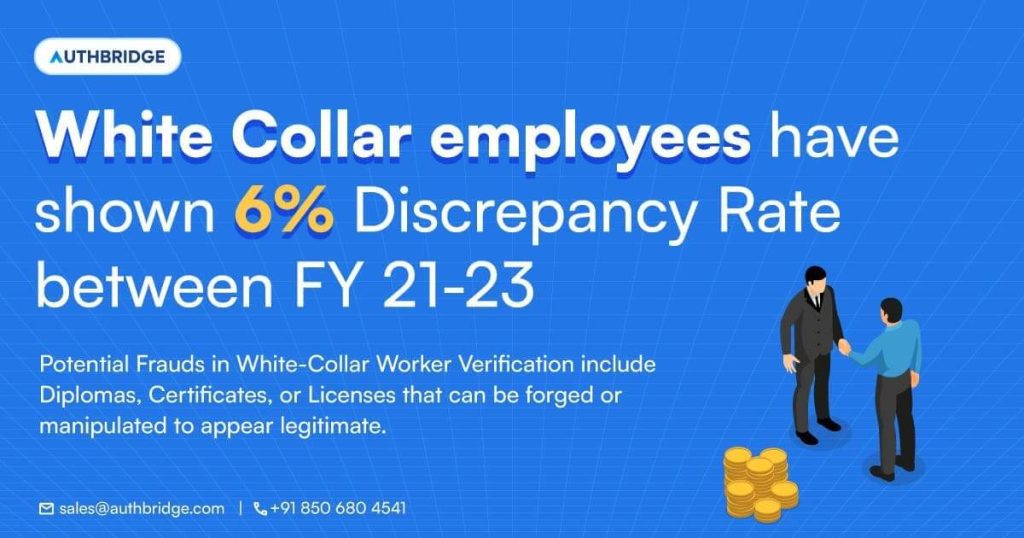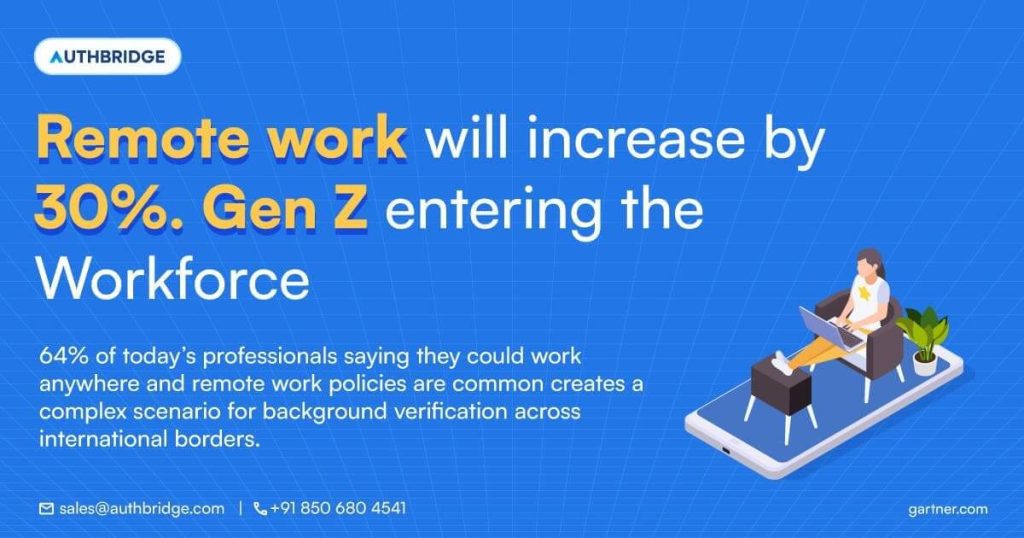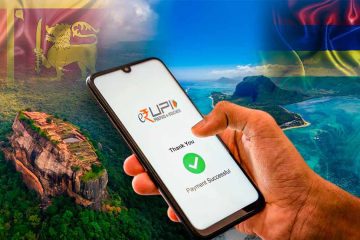In light of recent trends, there’s been a surge in prioritising user identification and verification across various domains, be it employees, gig workers, customers, or third parties. This heightened focus stems from the escalating instances of fraudulent activities, the proliferation of sophisticated tools and the dark web for malicious intents, and the evolving need to provide a seamless onboarding experience in our fast-paced, dynamic world.
With KYC procedures taking centre stage, there’s a significant emphasis on ensuring thorough verification, particularly for residents in remote areas, reflecting a commitment to security and compliance.
Navigating the Regulatory Landscape - Importance of KYC in India's Financial Sector
KYC procedures are measures regulated entities take to identify and verify their customers before transacting or establishing an account-based relationship. Such identification helps business entities to understand their customers/clients/third parties and their financial dealings, thereby reducing the likelihood of money laundering activities and terrorist financing.
In India, the KYC process has been a matter of great discussion among stakeholders – Government, regulators, entities and customers. The financial services industry, being the most highly regulated, needs to perform specific activities to stay on the right side of the law and mitigate the risk of money laundering and terrorist financing – such as client due diligence, maintenance of records, suspicious transaction reporting, etc. IRDAI, RBI and SEBI primarily regulate this industry; hence, the respective regulators develop the policy framework regarding anti-money laundering (AML) and counter-terrorism financing (CFT) to ensure customer security and prevent money laundering.
To ensure this, obtaining officially valid documents from the individuals as proof of identity and proof of address is crucial. In addition, certain KYC norms need to be followed during the verification process to verify the documents/ information proofs that customers have submitted.
Video KYC - The Crucial Emerging Trend
As the world becomes increasingly digital, organisations across industries are adopting new technologies to streamline processes and meet rising onboarding and verification demands. Among these developments, one is Video KYC. With digital transformation, industries like banking, finance, e-commerce, staffing and recruitment, health and pharma are more inclined to enable remote verification and onboarding; Video KYC is emerging as a game-changer in transforming the verification process.
What is a Video KYC?
As the name suggests, the Video KYC process is done through a live video call to ensure real-time verification of customers, vendors, suppliers, and other third parties. When the world tackled the COVID-19 crisis, businesses across industries faced various challenges in balancing security and seamless onboarding.
Traditional verification is surrounded by multiple challenges associated with complexity, high TAT, and operational costs. This became much more visible when the world tackled the pandemic crisis, and with traditional verification, it was nearly impossible to strike the right balance between security and seamless onboarding. Thus, more organisations are increasingly opting for video KYC to conduct verification at scale, reduce operational costs, and enable contactless onboarding.
The video KYC process includes conducting video interactions in real-time and capturing the customer’s data so that the required checks can be performed to ensure compliance with regulatory requirements. The process allows the verifier to capture and compare the individual’s live image with the submitted NID (national identity document), creating a complete identity record.
Traditional KYC vs. Video KYC
With technology evolving daily, V-KYC offers several advantages over traditional verification, including enhanced security, customer experience, and faster turnaround time.
Here is a detailed comparison between Traditional KYC and Video KYC:
Key Area | Traditional KYC | Video KYC |
Process | Requires physical presence for document verification | Conducted remotely via video call for verification |
Documentation | Physical documents required (ID, address proof, etc.) | Digital documents accepted (scanned or uploaded) |
Time | May take several days for completion, resulting in low TAT and delays | Real-time verification ensures faster TAT and quicker onboarding |
Cost | Higher due to physical setup and staff | Lower due to remote processes and reduced infrastructure |
Security | Relies on physical ID verification | Utilises biometric verification and encryption |
Accessibility | Limited by location. Inconvenient due to the need for a physical visit | Accessible from anywhere with an internet connection |
Verification Efficiency | Relatively slower due to paperwork, manual form-filling, and scheduling | Faster and more streamlined due to advanced technologies like OCR, liveness detection, face match, etc. |
Compliance | Compliance with regulations may vary | Enhanced compliance due to digital audit trails |
Flexibility | Limited flexibility in terms of scheduling | More flexibility in scheduling video appointments |
Fraud Prevention | Limited fraud prevention measures | Enhanced fraud prevention with biometric verification |
Scalability | Limited scalability due to physical constraints | More scalable due to remote access and automation |
Unlocking Efficiency: Video KYC Transforming Customer Verification Processes
- Enhanced Customer Experience, Reduced Churn Rate: Video KYC allows customers to complete the verification process remotely, eliminating the need to visit a physical location. Documents are accepted digitally and extracted via OCR, reducing the need for physical paperwork and manual form-filling. Also, the process is fast and typically completed within minutes, compared to traditional KYC, which may take several days due to paperwork and scheduling constraints.
- Goodbye to Low Efficiency & High Cost: Video KYC reduces costs associated with physical infrastructure and staff required for in-person verification. Financial institutions can seamlessly verify customer identities and assess risk profiles in a streamlined and standardised manner while adhering to compliance requirements.
- Wider customer reach: Video KYC can be accessed from anywhere with an internet connection, making it more inclusive for individuals in remote areas. Also, it becomes much easier for financial institutions to expand their customer base and tap into new markets by reaching individuals without needing access to a physical branch or office.
- Enhanced Security: Video KYC often incorporates AI/ML and biometric verification, providing a higher level of security than traditional methods reliant on physical IDs. This can help financial institutions detect and prevent fraudulent activities more effectively, reducing the risk of financial losses and reputational damage.
- Compliance Framework: Robust KYC solutions help meet compliance frameworks and industry standards to avoid penalties or legal issues.
Some common frauds that can be prevented with Video KYC
- Identity Theft: With Video KYC, individuals must present their original NID documents while visually verifying through live video, making it significantly harder for imposters to pass off stolen identities, as they cannot replicate the live interactions and physical appearance of the genuine individual.
- Impersonation: Fraudsters often attempt to impersonate legitimate customers during account opening or transaction processes. Video KYC adds an extra layer of authentication by verifying the customer’s identity in real time.
- Document Forgery: Video KYC minimises the risk of document forgery by allowing agents to scrutinise the authenticity of documents during the live verification process and detect subtle signs of tampering or falsification that may go unnoticed in static scans.
- Account Takeover: Video KYC strengthens authentication procedures by visually confirming the identity of users before granting access to sensitive accounts. Thus preventing fraudsters from hijacking accounts through stolen credentials or social engineering tactics safeguarding customer assets and confidential information.
Video KYC Benefits for Banks, NBFCs, and Telecom Providers
Various industries can leverage Video KYC to streamline operations and enhance security. Banks and NBFCs benefit from remote identity verification for account opening and transaction processing, ensuring compliance with regulatory requirements while reducing paperwork and improving customer satisfaction. Telecommunication providers can use it for customer registration, ensuring KYC compliance and enhancing data security, leading to a smoother onboarding experience and increased customer loyalty. Insurance companies can integrate Video KYC into policy issuance processes, accelerating underwriting and reducing fraud risks.
E-commerce platforms can verify seller and buyer identities, preventing fraudulent activities and fostering trust within their marketplace. Across these sectors, Video KYC facilitates secure transactions, enhances compliance, and improves customer experience while reducing operational costs and mitigating fraud risks.
Quick Checklist For A Streamlined Video KYC
- Utilising Advanced, Secure, and Intuitive Technology: Financial entities should adopt a user-friendly Video KYC platform that employs advanced technologies (facial recognition, liveness detection, OCR) and supports various devices and operating systems while ensuring end-to-end encryption to safeguard sensitive customer data.
- Making Video Calls Safe & Secure: Strong encryption methods should be implemented to ensure secure video interactions, data privacy, and unauthorised access for the overall customer experience.
- Strengthening Compliance and Risk Management: Integration of video KYC with anti-money laundering (AML) solutions enables the detection and prevention of suspicious transactions and aids in identifying high-risk customers promptly.
- Consent-Driven Data Collection: Prioritize customer privacy by obtaining explicit consent for collecting and processing personal information. Adherence to relevant data privacy regulations showcases a commitment to safeguarding customer data and fostering trust.
Selecting the Right Video KYC Solution Provider
Choosing a reliable and experienced video KYC solution provider is crucial to ensure all the above pointers and accommodate the business’s unique needs and potential growth in the future. Choosing a solution compatible with the customer management systems and easily integrated with the existing onboarding workflows is imperative to ensure a cohesive and efficient process without causing many disruptions or delays.
At AuthBridge, we offer a robust Video KYC solution that digitises customer onboarding journeys with end-to-end liveness detection, OCR, and geotagging capabilities, adding speed, scale and security to your customer onboarding process. Using AuthBridge’s Video KYC solution for customer onboarding helps in –
- saving operational costs by up to 70%,
- reducing KYC turnaround time by up to 90%
- ensuring an enhanced and secure customer experience
- assessing suspicious transactions to manage compliance obligations effectively
- implementing robust data protection measures, including encryption and secure storage of customer data, compliance with GDPR
Banks, NBFCs, mutual funds, insurance, logistics, telecom companies, mobile wallets and P2P marketplaces can use Video KYC to enhance customer experience and catch identity and financial frauds before onboarding customers.
Selecting the right solution provider, ensuring compliance with regulations, and integrating the system with existing workflows contribute to a seamless and effective customer verification process. This, in turn, enhances customer satisfaction, reduces operational complexities, and strengthens the business’s overall security and compliance framework.
To know more about our Video KYC Solution, talk to our solution expert today: https://authbridge.com/staging/contact-us/













